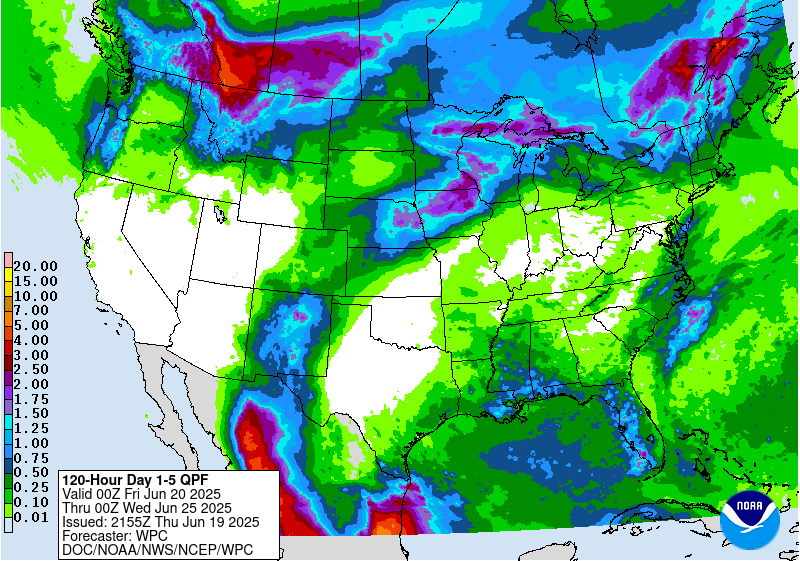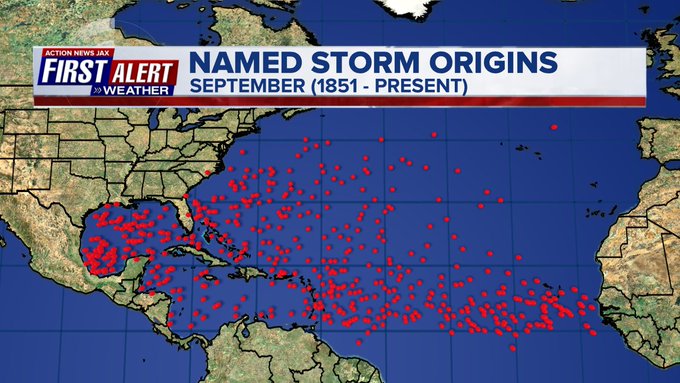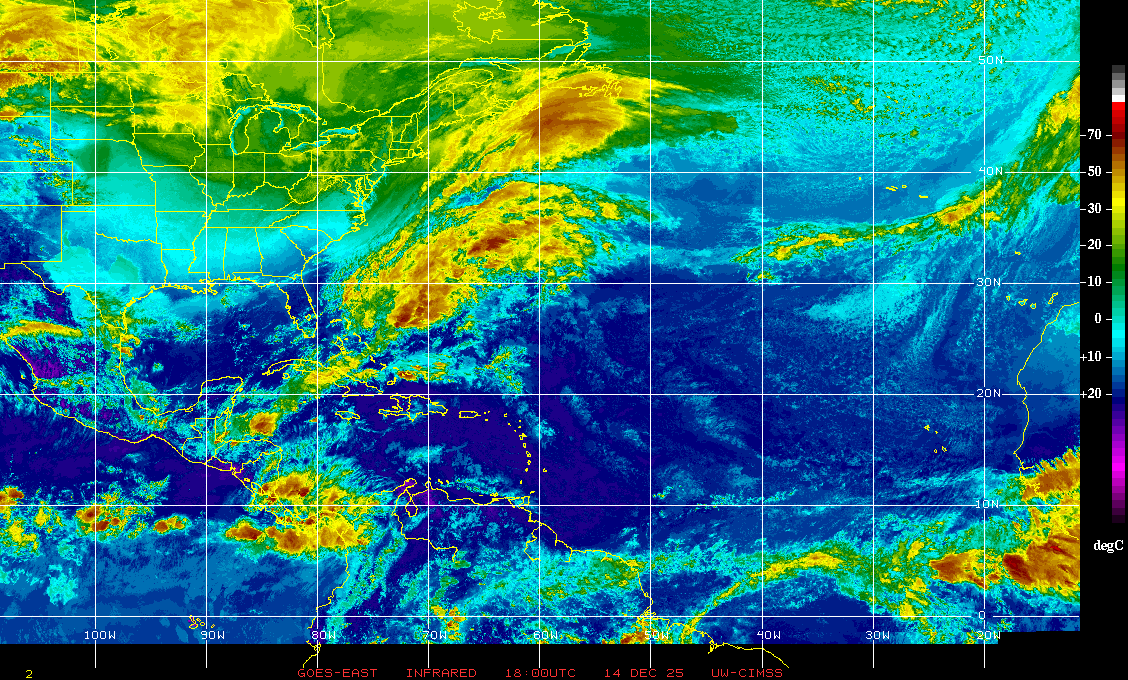Jacksonville, Fl. — The “Buresh Bottom Line”: Always be prepared!.....First Alert Hurricane Survival Guide... City of Jacksonville Preparedness Guide... Georgia Hurricane Guide.
STAY INFORMED: Get the * FREE * First Alert Weather app
FREE NEWS UPDATES, ALERTS: Action News Jax app for Apple | For Android
WATCH “Talking & Tracking the Tropics: The Science Behind the Season”
WATCH “Preparing for the Storm”
READ the First Alert Hurricane Center “Survival Guide”
***** ALWAYS CHECK & RE-CHECK THE LATEST FORECAST & UPDATES! *****
*** SALLY WILL NOT HAVE DIRECT IMPACTS ON JACKSONVILLE/NE FL./SE GA. THROUGH WED. BUT MAY ENHANCE SHOWERS & STORMS LATER THU. INTO FRI. ***
TROPICS:
(1) an area of ‘disturbed’ weather (showers & storms) that developed over the Bahamas late last week was upgraded to tropical depression #19 Fri. making landfall on the southeast coast of Fl. not far from Miami about 2am EDT Sat. then re-emerged over the warm Gulf by midday Sat. then quickly became tropical storm “Sally” Sat. afternoon. After holding steady state through early Mon., Sally strengthened into a hurricane late Mon. morning & has been slowly moving northwest while wobbling some to the north. Like most of the names this season... this is the fastest to 'S’ beating the record of “Stan” Oct. 2, 2005. In general, conditions looks to be favorable for at least gradual intensification just about right up to landfall though there has been an increase in shear along with some frictional effects from close proximity to land. Sally will turn more northward through early Wed. with a landfall near Pascagoula to the east of New Orleans & only a little west of Mobile. This should spare New Orleans from the heaviest rain while inundating the Mississippi, Alabama & Fl. Panhandle coasts.
Since Sally has been stronger, the models have been better on their initialization. Special N.W.S. balloon soundings - 4 a day vs. the normal 2 per day - will be released for at least the next several days across the Gulf Coast & Southeast U.S. in an attempt to have better analysis data for the models which would then translate into better output (forecasts). The upper level ridge has become “softer” with westerlies - albeit rather weak - extending south to near the Gulf Coast. After a what looks to be a gradual (slow moving) landfall, it appears there will be a slow turn to the northeast resulting in very heavy rainfall on the order of at least 1-2 feet! Until Sally gets to at least parallel (east) of New Orleans, there will still be plenty of sea water pushed into Lake Pontchartrain & nearby waterways, canals & tributaries but rainfall should not be excessive for New Orleans which will help the overall situation.
As Sally moves more to the east & into Ga. later Thu. into Friday, a few lingering heavy rain bands may affect Jacksonville/NE Fl. & SE Ga. but no significant impact expected for Jacksonville/NE Fl./SE Ga.
Everyone along the Gulf Coast - especially from the Fl. Panhandle to Louisiana - needs to stay up to date on the latest forecasts.












(2) Tropical depression #17 formed over the Eastern Atlantic last Sunday & was upgraded to tropical storm “Paulette” Mon., Sept. 7th The fastest ever to ’P’ easily beating the old record of Philippe Sept. 17, 2005. The forecast is for Paulette to to turn sharply to the northeast through midweek. Paulette will be an “ocean storm” staying well east of the U.S. *but* moved over Bermuda early Mon. with the entire island enveloped by the eye near 5am EDT.
Though far to the east, easterly swells & an increasing rip current risk affect Florida & much of the Eastern U.S. coast this week even though Paulette will be moving further out to sea.
(3) Depression #20 formed Sat. from a westbound African tropical wave & was upgraded to “Teddy” early Mon. This is the fastest to the 20th storm breaking the record of an unnamed tropical storm Oct. 4, 2005. Indications are that the Bermuda High to the north will shift more to the east & north allowing for a turn to the north over the Western Atlantic. This will be a clear miss for the Antilles.... & likely stays far to the east of the U.S. but will maintain easterly swells to the U.S. east coast into at least the upcoming weekend.

(4) Tropical depression #18 was upgraded just off the coast of Africa early Mon. then to tropical storm “Rene” Mon. afternoon before a weakening trend Tue. night followed by another strengthening trend Thu. Rene dissipated late Mon & the last advisory has been issued by the NHC.
(5) Another African tropical wave was upgraded just off the coast of Africa early Mon. to tropical depression #21 & a few hours later to “Vicky”. This is the fastest to the 20th named storm beating the previous record of Tammy on Oct. 5, 2005 (which made landfall in Duval Co. as a weak tropical storm. There was a “no name” storm before Tammy in ’05 which is why it was a 'T' name as the 20th named storm vs. a 'V' storm this year).
Yet another African tropical wave will move off the coast later this week with the potential for development.
(6) A lowering of pressures has been indicated by forecast models over the Western Gulf of Mexico into next week. Low pressure may eventually develop... or there could be some interaction with other waves/disturbances. If so, it’s an area to keep an eye on for possible tropical development.




September is usually the most active month of the hurricane season:





:quality(70)/cloudfront-us-east-1.images.arcpublishing.com/cmg/WW5AJL3ARQUGDQMAQUNSFX4CLE.jpg)

















:quality(70)/cloudfront-us-east-1.images.arcpublishing.com/cmg/HJ3L3HBBJBH6PB5ZFB3SVGFXSU.png)
:quality(70)/cloudfront-us-east-1.images.arcpublishing.com/cmg/4TQDXERT5VGORNZ4NQWXNO5H64.png)
:quality(70)/cloudfront-us-east-1.images.arcpublishing.com/cmg/SKX4RKW645ERTATCLA4V2FVRKQ.png)
:quality(70)/cloudfront-us-east-1.images.arcpublishing.com/cmg/5PIZRG7NYBAHDDABTG5BNVGO6Y.jpg)
:quality(70)/cloudfront-us-east-1.images.arcpublishing.com/cmg/V7JDMMD6JJEEHIL6C7OSLV3ABU.png)
:quality(70)/cloudfront-us-east-1.images.arcpublishing.com/cmg/MJK4WGOAWZAC7OMTJUABAA2IW4.jpg)
:quality(70)/cloudfront-us-east-1.images.arcpublishing.com/cmg/7AIMBKJUXIDIDWOVXSIHK65NHI.jpg)
:quality(70)/cloudfront-us-east-1.images.arcpublishing.com/cmg/LYXELYCV5G7WBT7663ANY5MQFQ.jpg)
